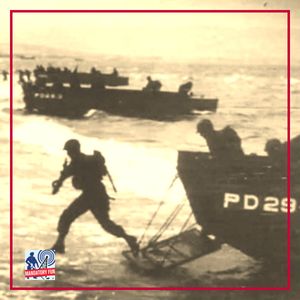Mandatory Fun
We Are The Mighty
Why Navy SEALs will storm the beaches of Normandy in 2018

Why Navy SEALs will storm the beaches of Normandy in 2018
Description
Jumping into freezing water is just part of the legacy of being a Navy SEAL. During World War II, the U.S. Navy Combat Demolition Units were just a handful of guys equipped only with a pair of shorts, a knife, and maybe some explosives. But the roots of being amphibious is still close to the Navy special warfare community – that's why they still call themselves "Frogmen."
Some 74 years ago, these Navy Combat Demolition Units braved the freezing waters of the English Channel in the predawn hours of June 6, 1944 – not to mention the thousands of Nazi guns pointed at them at the water's edge.
They were trained for this.
Not necessarily the undertaking of being the secret first wave of invaders of the most fortified positions in the world. No, they were trained to win against any and all odds or obstacles. These men were the precursor to modern-day SEALs, moving to do their part on the beaches before the D-Day Landings.
That's how SEAL training works to this day, teaching recruits to overcome the things they think can't be done. Now, in tribute to those few who landed at occupied France well before the rest of the Allies, 30 current and former Navy SEALs, as well as some "gritty" civilians will recreate those NCDU landings.
Today's SEAL re-enactors will do a seven-mile swim to land at Normandy, then they'll scale the cliffs on Omaha Beach, to place a wreath at the memorial there. At that point, they'll gear up with 44-pound rucks to do a 30-kilometer ruck march to Saint-Lô.
Why? To raise awareness (and funds) for the Navy SEAL Heritage Museum in Fort Pierce, Fla. – and the wide range of programs they offer to support family members of those SEALs who fell in combat, doing things only the U.S. special operations community would ever dare.